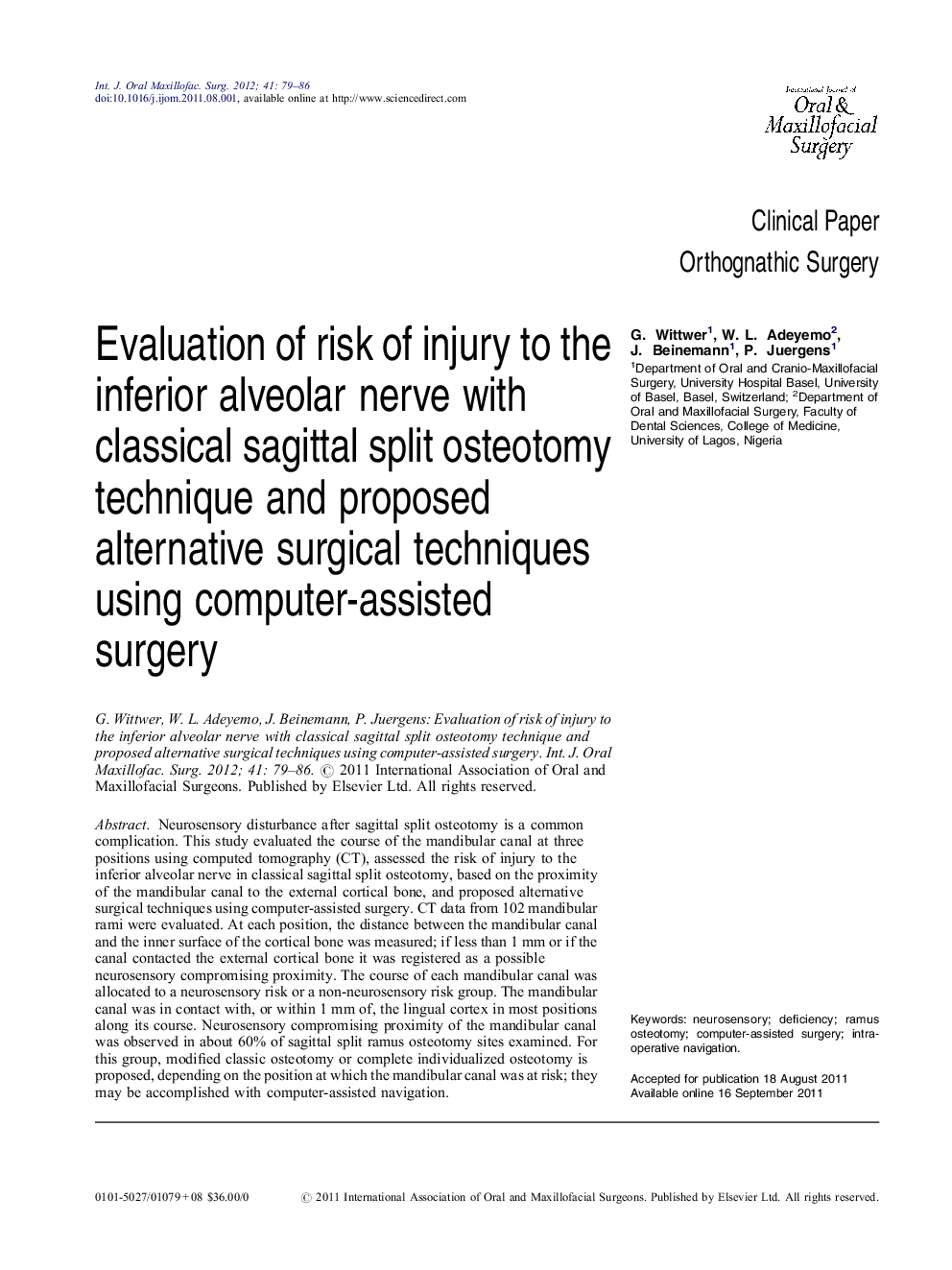| Article ID | Journal | Published Year | Pages | File Type |
|---|---|---|---|---|
| 3133467 | International Journal of Oral and Maxillofacial Surgery | 2012 | 8 Pages |
Neurosensory disturbance after sagittal split osteotomy is a common complication. This study evaluated the course of the mandibular canal at three positions using computed tomography (CT), assessed the risk of injury to the inferior alveolar nerve in classical sagittal split osteotomy, based on the proximity of the mandibular canal to the external cortical bone, and proposed alternative surgical techniques using computer-assisted surgery. CT data from 102 mandibular rami were evaluated. At each position, the distance between the mandibular canal and the inner surface of the cortical bone was measured; if less than 1 mm or if the canal contacted the external cortical bone it was registered as a possible neurosensory compromising proximity. The course of each mandibular canal was allocated to a neurosensory risk or a non-neurosensory risk group. The mandibular canal was in contact with, or within 1 mm of, the lingual cortex in most positions along its course. Neurosensory compromising proximity of the mandibular canal was observed in about 60% of sagittal split ramus osteotomy sites examined. For this group, modified classic osteotomy or complete individualized osteotomy is proposed, depending on the position at which the mandibular canal was at risk; they may be accomplished with computer-assisted navigation.
